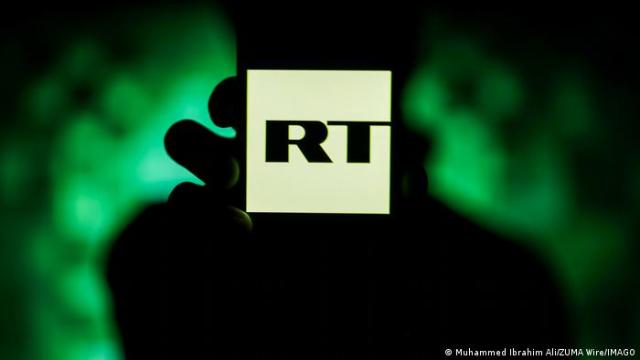
Russian state media were a major force in Latin América before the war in Ukraine. Promoting populist content to lure their audience, they are an established presence – not just in countries with authoritarian regimes.
By DW
Apr 13, 2022
Facts, half-truths, rumors, and fake news, mixed in with slimming tips, sport and showbiz, and all presented by journalists. Standard daily media fare in many Latin American countries. However, for Russian state media broadcasters, like Russia Today and Sputnik, there is a purpose behind the mixture – targeted disinformation. Both channels are classified by media experts as propaganda tools of the Russian government.
The Spanish-language offshoot of Russia Today, Actualidad RT, has been a runaway success since it was founded in 2009. With more than 18 million followers on Facebook and almost six million on YouTube, this “offshoot” far outstrips the English-language version, which has around seven million Facebook followers and around four-and-a-half million on YouTube.
“Russia used its status as host of the 2018 football World Cup to establish its media toehold in Latin América,” says Mario Morales, a professor of social communication at Colombia’s Pontifical Javeriana University. He explains that, through the supposedly apolitical medium of sport, “Moscow presented RT as an alternative that professed not to convey propaganda or ideological or state interests.” Since then, Morales says, RT has penetrated the media market in Latin América, and has built up a “loyal following” among its users.
Actualidad RT: 200 employees and three regional offices
“It is easy for Russian state media to infiltrate Latin América, because they are similar to many Latin American media organizations which present themselves as representing the state, but ultimately serve the interests of their respective governments,” the media researcher Adriana Amado told DW. In many Latin American countries, she explained, media that have clear propaganda aims exist alongside media that adhere to professional journalistic standards.
According to RT, the channel has 200 Spanish-speaking employees, with offices in Caracas (Venezuela), Havanna (Cuba), and Buenos Aires (Argentina). Although RT was banned from social media following Russia’s invasion of Ukraine, its content is still widely circulated on other websites. This was also the point at which Actualidad RT abandoned the last vestiges of critical reflection. It unconditionally defended the Russian invasion. Inna Afinogenova, the deputy director of Actualidad RT and a popular influencer in Latin América, was one of the journalists who spoke out in this vein.
Conspiracy theorist tropes
On her YouTube channel, “Ahí les Va,” Afinogenova, RT’s most famous face in Latin America, presents and comments on world events, as well as on the inconsistencies and farcical activities of certain Latin American politicians. This all goes down well with her audience. However, she also uses her videos to justify the Russian government’s persecution of the opposition politician Alexei Navalny.
“Inna Afinogenova cultivates a style that is very popular with conspiracy theorists. Its most important stylistic elements are claims like ‘they don’t want you to know this’ and ‘I’m going to tell you something now that you won’t see in the mainstream media’,” explains Adriana Amado. Her colleague, the Colombian researcher Mario Morales, comments that Inna Afinogenova is utilizing a genre that is very widespread in Latin América: activism-motivated journalism.
The start of the invasion of Ukraine on February 24 was also the start of a battle for interpretative control in the Spanish-language Internet, says Maria Virginia Marin, the founder and director of ProBox, a Venezuelan monitoring service that observes social networks.
Fertile ground for propaganda
As in Russia, she says, there is a “poisoning of the information realm in the social networks.” Marin considers these networks “the most important and sometimes the only source of information” in countries with authoritarian governments. She points to Venezuela, Cuba, and Nicaragua, where, she says, censorship, propaganda, and disinformation have long been institutionalized along Russian lines.
“In Venezuela, for example, Russia’s version of events has considerable reach among the population. This is due to support from the government of President Nicolás Maduro, and disinformation from the Venezuelan state broadcaster VTV, which justifies Russia’s invasion of Ukraine, and relativizes it by pointing out that the US has done similar things in recent history.”
However, it is not only in countries under authoritarian rule, or via channels like Actualidad RT or Sputnik, that unqualified Russian disinformation is reaching the people of Latin América: It is also being disseminated by the Venezuelan network Telesur.
Gabriel Bastidas is a producer and correspondent with TV Network, a channel for the Venezuelan diaspora. “The government of the Argentine president Alberto Fernández made sure that Telesur was included in the basic program that everyone in Argentina with a TV can watch,” he told DW. Consequently, Telesur is beamed into the homes of 83% of the Argentine population.
…
Read More: DW – How Russia is waging a successful propaganda war in Latin América
…

